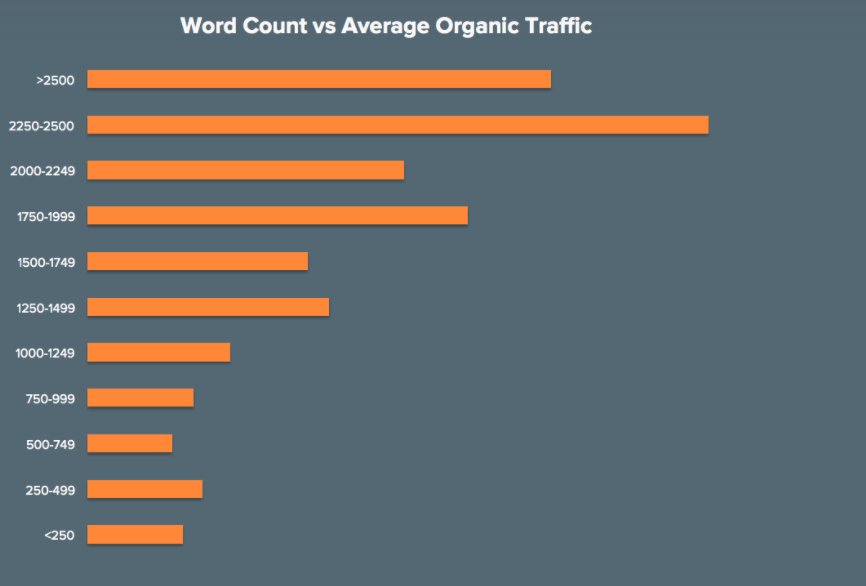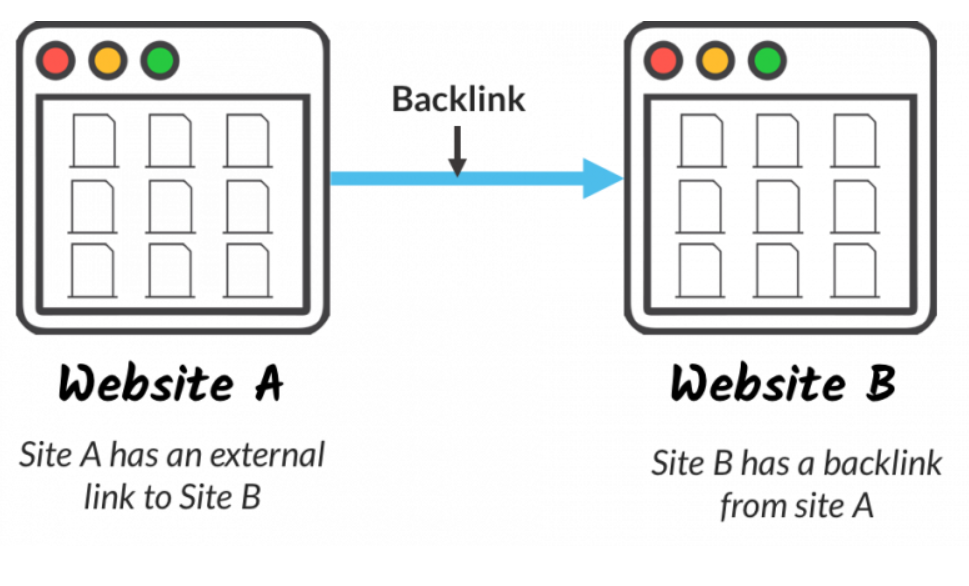Have you ever searched for something on Google? (Who hasn’t, right?) Have you ever stopped to wonder though, how and why those top ten site options you see ended up there? The quick answer: SEO. SEO, or Search Engine Optimization, is the process that helps websites rank in Google so they come up at the top of the list in searches. SEO is like the invitation to the party you are hosting — without it you end up by yourself in your party hat feeling sad. And nobody wants that! If you or your business are trying to rank in the top ten Google searches for your industry it’s time you start focusing on your SEO strategy. When it comes to writing copy, you are writing for two people: your target audience and Google. If you forget to write with Google in mind, your ideal customers might never stop by your party. Check the box on these five quick-win, must-have SEO tips to ensure you are bringing your target audience to your website.
1. Check the Length of Your Text
The shorter your blog or article the more likely Google is to rate your website as “thin” and not relevant or valuable for readers. In fact, the recommended word count for blogs and articles is anywhere around 1,000–2,600 words. Anything less tends to rank pretty low.
This might be a surprise to some, especially considering the low attention span of readers today. However, keep in mind that today’s consumers are savvy and can easily fish out content for the sake of content vs. high-quality content that actually shares valuable, action-oriented, and authentic information.
A longer blog or article that shares detailed, accurate, and value-packed information directed at your ideal audience is going to keep your reader on your page for longer and that is what improves your ranking in Google.
But don’t take my word for it! Neil Patel, SEO master and co-founder of Neil Patel Digital, has written plenty on the topic and even suggests pushing for 3,000 words. His data proves that the longer (and more valuable to your reader) the blog, the better.

2. Add Outbound, Internal, and Inbound Links
By linking to previous blog posts or articles you’ve posted (internal links) or outside sources (outbound) you are saying to Google: “Look how relevant and related I am to other content out there!”
The key to this tip is understanding that Google cares a lot about relevancy and authority. By linking out to credible and trustworthy sources throughout your own site, you are indicating that your content is high quality and communicates accurate information.
To further establish yourself as a credible source on your topic, your writing should also be original and add to the conversation in a new way as opposed to regurgitating information.
Another way to build relevancy and rank in Google when it comes to links is to have backlinks (or inbound links) to your content. Backlinks are when another website links to your piece of content.
This is essentially another website saying “hey, we like what this other website is saying, go check them out!” The more backlinks you have to your site, the better you will rank because Google now has reason to believe that your website is a credible and relevant resource.

3. Don’t Forget About the Meta Description
Never heard of a meta description before? Don’t worry, this is a frequently missed component of a website. Although minor as this detail might seem, the meta description is super important when it comes to ranking (and how your website appears) on Google.
The meta description is the summary you see below the link to your site on Google (see image below). This is the text that Google searchers will read before deciding to click on your website. Each page on your site needs its own unique meta description. If you don’t fill in this information yourself, your website server will most likely fill in the blanks for you.
Your meta description invites your readers in and gives them a snapshot of exactly what they can expect from your page. To get more clicks to your site (and as a result, increase your Google ranking) make sure your text is inviting and clearly describes what your page is about. The recommended length for a meta description is 155–160 characters.
One thing to keep in mind though is that search engines are no dummies. If they think your meta description doesn’t accurately describe the page they might remove your description for their own. This doesn’t happen too frequently but it’s important to keep in mind as you craft the perfect description for your site.

4. Make Sure Your Content Is Easily Understood by a 6th Grader
It doesn’t matter if your target audience is college-educated professionals with years of experience because when it comes to successful website copy, blogs, and articles, your writing should be sixth-grade reading level or below.
Unless you are publishing a study or writing in an academic journal, most people want to read the way that they talk. They don’t want to use unnecessary brain power deciphering the meaning behind your complicated language and industry-specific jargon.
Google keeps track of how long users spend on your website and if readers are leaving your page because they feel confused or overwhelmed by your writing, then you aren’t really doing yourself or your reader any favors. If your content is easy to read it keeps people on your page for longer, which increases your Google ratings.
5. Include Key Search Terms or Phrases
Keyword research is the bread and butter of SEO. If you don’t know what keywords you want to rank for or what your competitors are ranking for, then it’s time to dig in and figure that out.
Keywords are the search terms that users are typing into Google’s search bar. It’s important to understand who exactly your target audience is and what solutions they are looking for before you begin implementing any keywords or phrases into your site.
Understanding your target audience and their buyer’s journey will allow you to better predict what search terms they are typing into Google so that you can try and rank for those terms.
By including key search terms and phrases that your target audience is searching for into your website copy, blogs, and articles, you make it easier for your website to pop up first. The best way to get into the mind of your ideal customer is by hearing directly from them. Use websites like Quora, Reddit, Wikipedia, and Facebook groups to seek out exactly what language, keywords, and phrases your audience is using and what questions they are asking.
Neil Patel is a great resource for keyword research planning and I highly recommend you check him out because there is a lot more to it than just popping in some commonly searched words to your blog. Like all SEO strategies, the more time you spend on this, the more it will pay off in the long run.

Take a deep breath and remind yourself that you’ve got this! SEO is complicated for everyone (except maybe our buddy Neil Patel) and it always takes time to figure out the right strategy. When it comes to SEO, the more you learn and implement the more it will pay off in your ranking and the more love you will get from Google.
What SEO strategies are you implementing that you have found successful? I’d love to hear them!
